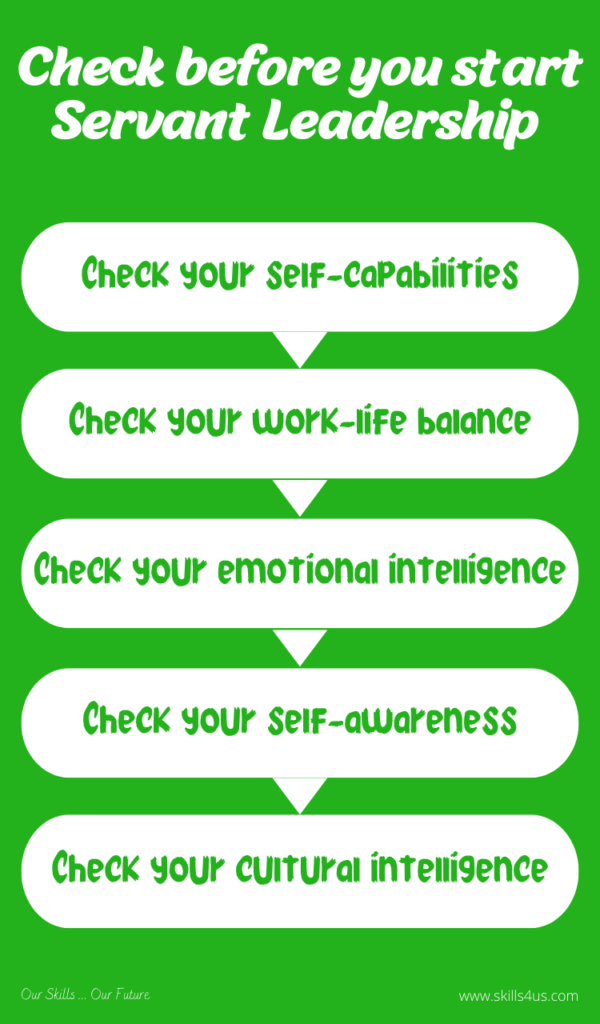
Servant Leadership Creates a Balance Between Leadership Practices and Serving Others
Considering the tremendous and accelerating development in the business world will be an inevitable change in human thought in general and management in particular. Moreover, the intelligent transformation in business organizations confirms the necessity of shifting concepts and organizational patterns and preparing organizations for the future. Hence the strong need today for a new and innovative leadership style, “servant leadership.”
It is an intelligent equation: the leader, while leading individuals and work teams, serves them to be more prepared and capable of serving others.
Therefore, strategic and future business leaders‘ adoption of the “servant leadership” style encourages teamwork, participation in decision-making, caring for employees, and promoting learning and growth. Adopting this leadership style in business organizations will inevitably lead to job advancement and their performance to become more productive and creative. In addition, the actual attention and care for the talents in it.
Servant Leadership
The leader is the one who can direct the efforts of others toward achieving the desired goal efficiently and effectively. And servant leadership, in turn, does this by focusing on empowering employees and encouraging them to innovate. It also enhances their participation in the decision-making process and the development of policies compatible with the organization’s changes.
The basic rule of servant leadership is to create a balance between exercising leadership and serving others. We can achieve this by preparing development programs for employees that define their career paths and meet their goals and needs as a priority for the organization. Servant leadership’s purpose is to improve individuals’ lives and then raise the level of their organizations after them. It is also considered a best practice for employee participation and productivity.
Check yourself before serving others.
The key to successful servant leadership in serving others is for leaders to start with themselves. At first glance, some people think there is a paradox and conflict between this talk and the “servant leadership” style. To solve this paradox, I suggest the following model through which you, as a business leader, can verify yourself through five steps before starting to serve others in general and your team in particular:

1. Check your self-capabilities
As a leader, you must remember to take the time to develop your learning and growth while being committed to helping teams learn and grow. Therefore, you must verify and build your capabilities, experiences, and skills so that they reflect your work in practice. Not only do you help your employees as a leader, but you are also an example to them.
2. Check your work-life balance
Dealing with and recovering from work stress is a top concern for many people and organizations. The focus has often been on achieving work-life balance as an aspiration. But with the crises facing organizations, for example, the Covid-19 pandemic, as a leader, achieving the balance between life and work and applying steadfastness and resilience practices has become a critical and significant challenge. It contributes to business continuity, achieving the most outstanding possible balance between work and life.
3. Check your self-awareness
Self-awareness is one of the essential leadership skills necessary for effective leadership. It develops leaders to search for different patterns in the ways of thinking they tend to and how to notice the situations they are going through. In addition to how they interpret things for themselves and understand the world around them. So as a leader, you cannot put the needs of others first if you do not foster and increase your self-awareness and fully understand and think about your values and how they shape your interactions. Servant leadership needs a high level of self-awareness to be effective.
To increase your self-awareness and ability to influence others, you need to communicate effectively with your employees, listen to them, and get feedback from them. It creates a more effective servant leadership model in creating a positive and participatory work environment.
4. Check your emotional intelligence
As a leader, emotional intelligence helps you develop the skill to empathize with your team by putting yourself in their shoes and feeling what they feel. It leads you to manage relationships with them and direct them in a sophisticated human way. Servant leadership requires developing your skill in emotional intelligence to increase your ability to understand the thinking, motives, and behaviors of others in general and your employees in particular. It enhances your communication and dealing with them because you realize that feelings control them, which strengthens relationships, whether on a professional level or a personal level with them.
5. Check your cultural intelligence
Having cultural intelligence is a positive business change, as it means more access to resources, information, and talent. As a leader, you need to understand your employees’ values and expectations, which requires you to possess a high level of cultural intelligence. It enables you to understand and control the differences that may cause contradictions or conflicts between your employees and work teams, regardless of their diversity and different cultures.
With the increasing diversity of human resources in organizations, servant leadership requires a high skill in cultural intelligence to understand and deal with multiple cultures, all of which are in the same workplace. So, learning the core values and ideas of societies and accepting cultures will increase your cultural intelligence, which in turn helps you to lead effectively and be more productive.
Advantages and benefits of servant leadership
The leader’s sufficient knowledge of the organization and the tasks assigned to him enables him to provide adequate assistance and support and facilitate the functions of work teams in general and direct subordinates. Moreover, adopting the style of “servant leadership” achieves some advantages and benefits:
- Contributes to organizational development by empowering and inspiring employees to work as a team and increase growth and productivity.
- It helps employees to understand their strengths and weaknesses and reach the top of their abilities and competencies to achieve balance in their lives.
- Contribute to establishing a culture of serving others, whether inside or outside the organization.
Leaders must make tough decisions in our increasingly complex world, and change is the only constant. Therefore, strategic leaders must adopt a more sustainable servant leadership approach to serve the team they lead more effectively. Because adopting this approach helps them prepare future leaders and managers who are more creative and accomplished and contribute to the growth and development of organizations and the realization of their vision.



